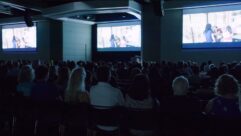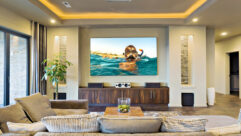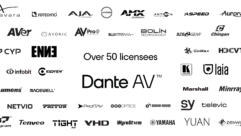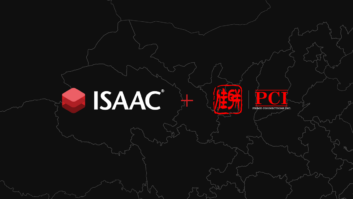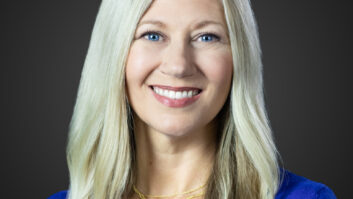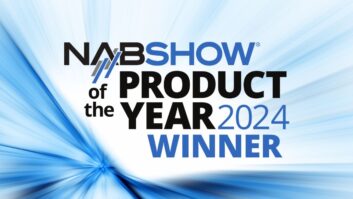On this edition of the SVC Podcast, Contributing Editor Bennett Liles completes his talk with Gary Baria of Vision Integration on their complete renovation of sound, video and lighting at the Mt. Hebron Church in Mobile, Alabama. Gary outlines the RF mic operation, projection, the Blizzard lighting system and the video setup including a Roland XF84H matrix switcher.
Links of Interest:
· Blizzard G-Max moving light fixture
· High End Systems Hoglet 4 lighting controller
· Panasonic RZ770 laser projector
This is the SVC Podcast from Sound & Video Contractor with Gary Baria of Vision Integration. We’ve got all the show notes and product links for the podcasts at svconline.com. Go to Podcasts at the top of the page.
The Mt. Hebron Church in Mobile, Alabama had to divert their services to another area while local contractor Vision Integration put in an all-new Martin Audio sound system, new video cameras and Blizzard lighting. Gary Baria is back this week to wrap up his story on the project coming up on the SVC Podcast.
Gary it’s good to have you back with us this week on the SVC Podcast from Vision Integration in Mobile. We’ve been talking about the Mt. Hebron Church where your guys came in there and just re-did the whole place with sound, video and lighting. They’re a fast-growing church. I think they not only outgrew their sound system but their whole building.
Yes they are, Bennett. They’re working on plans right now. Their future plans are to build a 2,500 to 2,700-seat sanctuary, which will probably end up being the second-largest church in the area. [Timestamp: 1:21]
Well that’s going to be an even bigger project when you get in there and start doing that. A contemporary church, a lot of performers with wireless mics plus a choir. I’m sure it can be fun mixing a choir with a lot of vocalists on solo mics. What sort of an RF mic situation do you have there?
We went with the ULXD Shures. Most everyone has SM58’s with those except for a few Beta 87A’s that we have on certain performers because of their voices. But we, of course, did our due diligence on frequencies when we were looking at the area; came up and split the frequencies up between the J50’s and the G’s, of course. And the ULXD 4Q is just a great, great receiver. We’ve had nothing but excellent performances out of it. And, of course, we use these all networked together and there is a computer out front where we run the Shure software. Of course we can change frequencies or the guys can look at the wireless going on during the service and if they see any issues popping up, of course they can take care of it right then and there. It’s a really nice thing to have and the church is really happy with it. [Timestamp: 2:35]
Okay, and that’s Wireless Workbench you’re talking about on the software?
Yeah, the Wireless Workbench with Shure. Yeah.
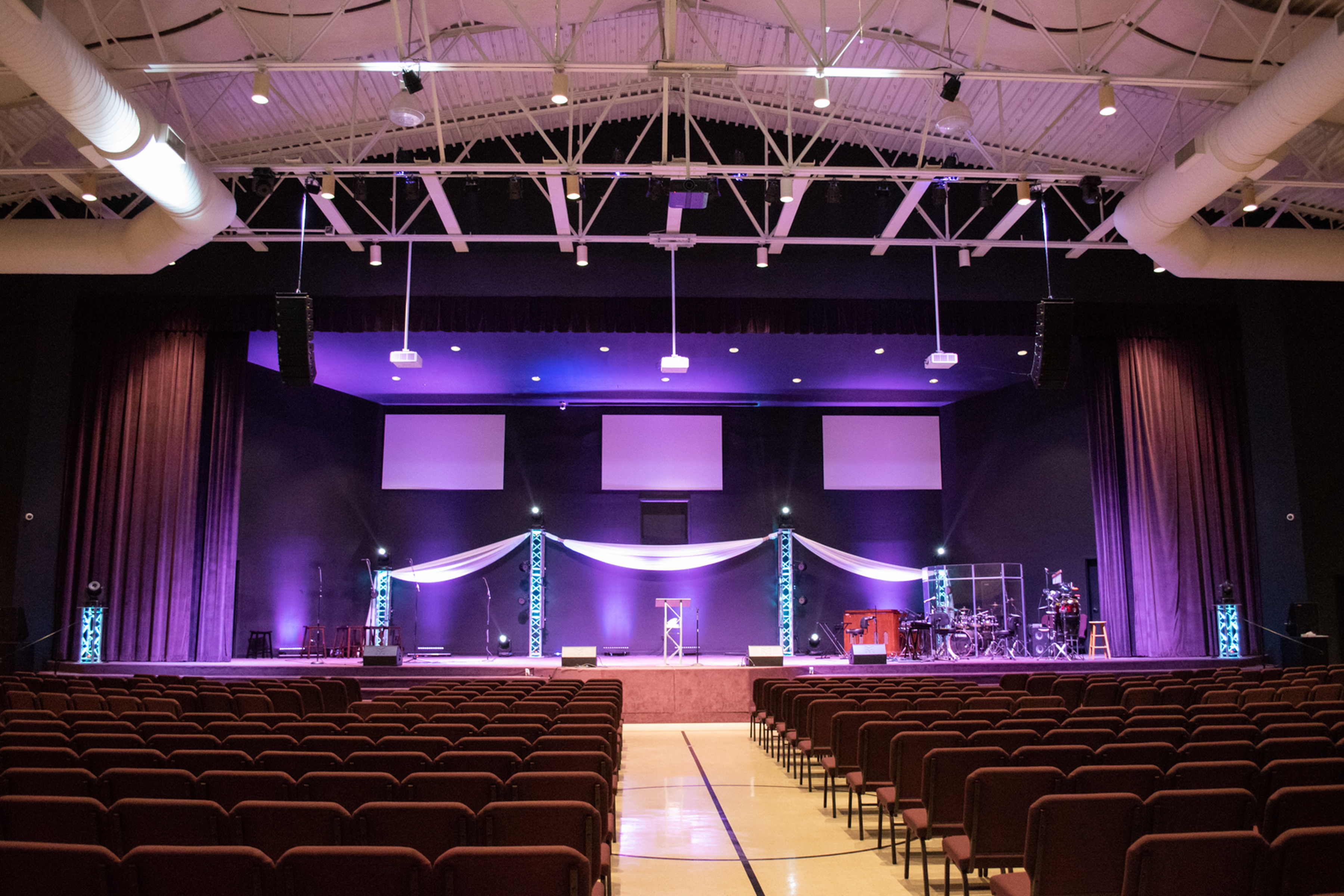
Yeah, that’ll tell you everything you need to know on the mics and those Shure mics with SM58 heads on them are tough enough they can survive being dropped and bumped into things and just keep right on going.
Yeah, and like I said there was times when the children come in and, of course, children and microphones do not mix. But so far, luckily, we’ve had no issues with these microphones, and they’re tough as nails and that’s why we installed them. [Timestamp: 3:08]
So you’ve got Wireless Workbench handling frequency coordination and telling you about battery condition and all that. The church does have streaming for the services so how is the video system set up?
Well, we’re using the Roland with the XS84H is the eight by four multi-format AV matrix switcher. We’re also using the PTZ optics cameras and the Panasonic handheld cameras. We’re all using Creston Digital Media to do some of the video switching for us too. The church has three screens with three Panasonic 7,200-lumen projectors, the RZ770’s. [Timestamp: 3:50]
You’ve got all three of those going and with the screens it might have been a little bit of a trick to keep the glare off of the projection areas.
It was a little bit of a challenge, but of course the back wall of the sanctuary is extremely tall so we were able to get the screens up high to still give them a nice viewing area and not everyone having to crane their neck up to see the screens. The lighting was a little bit of a challenge, but it worked out so as long as the customer is happy, we’re happy, of course. [Timestamp: 4:21]
And what do you do on the video production? Is there IMAG involved on the services with camera operators having to hold close-ups with mobile people onstage?
They’re not using IMAG yet. That’s something we we’ve been discussing with them, but of course there are three handheld Panasonics, the AG-UX180’s, that we’re using. Two of them are stationery on tripods, so then we have one roaming on-stage camera. And what’s unique about the situation is with the matrix switcher from Roland we were able to put any image on any screen at any time. [Timestamp: 5:00]
I would think that with that capability you might run into situations where people decide to do something differently on a moment’s notice and with that flexibility you can accommodate them so how do you record the video from the services?
The church already had recording in place so all we had to do was just give them a video feed into their streaming and everything worked out seamlessly.
When you’ve got all of those people on the tech side trying to stay coordinated how do they communicate during the services?
Luckily there was a two-channel ClearCom already in place, so we’ve got the audio crew on one side and the video guys on the other. Also, we utilized an old Aiphone system that was still there. If they want to go station-to-station without interrupting anyone else on the ClearCom, then they can go back and use the old Aiphone. [Timestamp: 5:52]
Okay, well that sounds like a pretty good plan.
It worked out really well. It surprised us. So we were really happy with it.
What kind of lighting system was installed in the tech systems upgrade?
We ended up going with the Blizzard. So we have the Blizzard Kryo.Morph’s, the G-Max, the Colorise Quadra’s, the zoomable PAR’s. We ended up putting truss in and it’s all being controlled with a Hog Hoglet 4. [Timestamp; 6:17]
And where do you have the lighting control? Is that right there at front-of-house or someplace else?
The lighting and front-of-house are all in the same location.
Well, that would help on communication and with running all the cabling.
Yeah, it was. And all that conduit was already in place. We had to clear some of it out and reuse some of it, but what also has benficial is the guys are cross-trained in audio and lighting so that If someone has to jump up and run away, then the light guy can walk over to the audio and do anything he needs or the audio guy can walk over to the lighting and do anything else. [Timestamp: 6:55]
That’s always handy and one of the big challenges in working volunteer crews is keeping everybody trained with people coming and going. That can be a significant problem when you’re trying to break new people in on live services.
Well, that’s another reason we went with the dLive with Allen & Heath is that desk is very, very user-friendly compared to some of the other digital consoles out there in that price point. So it’s been a challenge to train them, to get them out of the analog world and into the digital world, but they’ve got a couple of really sharp guys there who have picked it up and are just running with it so I don’t get too many phone calls anymore on Sunday morning. [Timestamp: 7:33]
Well, no news is good news on that.
True.
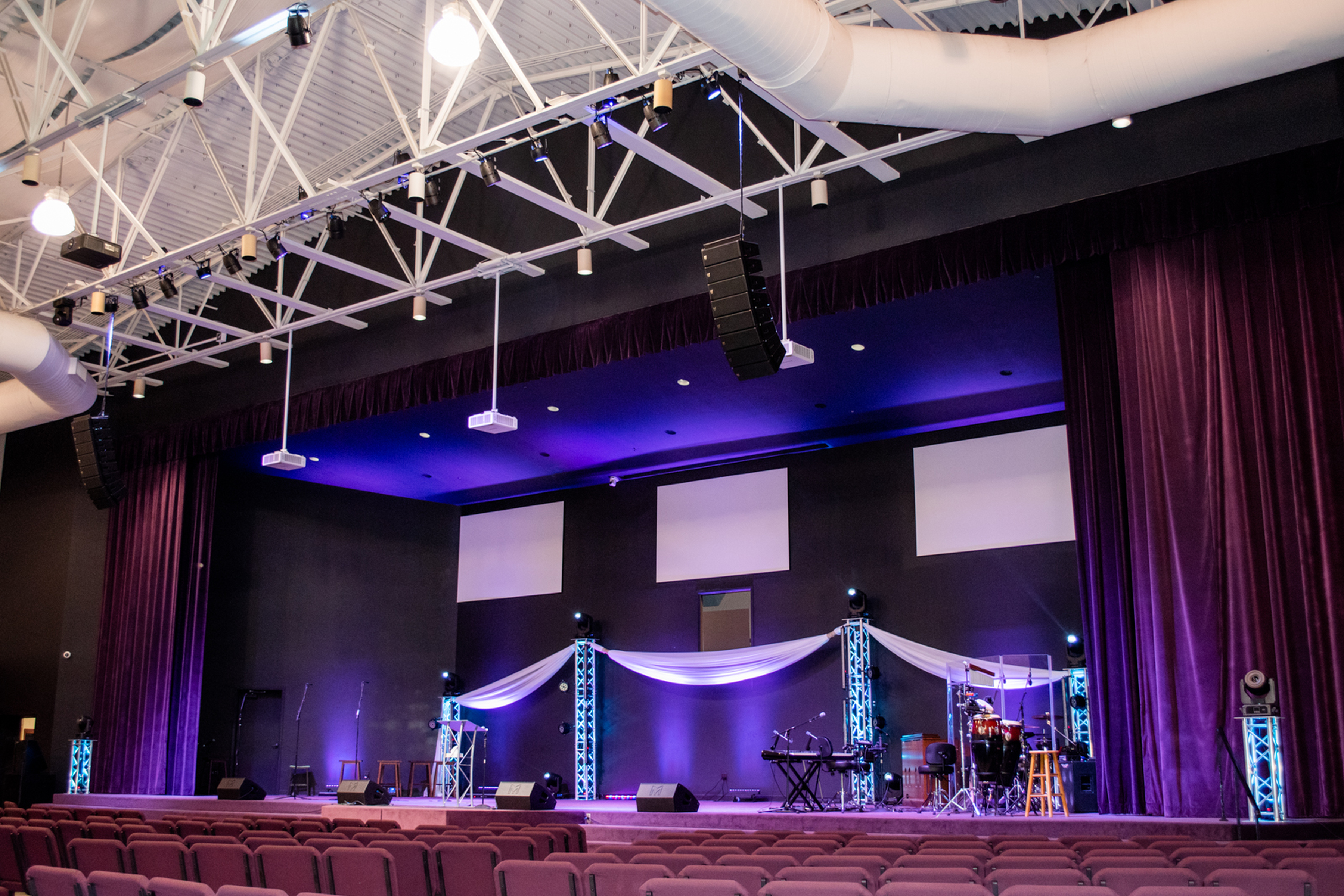
When your people got in there, from the beginning to the end of it, with what you’ve got now, how long did the whole upgrade project take?
Right at three weeks. There’s always issues with manufacturing and shipping; you know, you run into that. Of course doing a retrograde refit, of course you’re going to run into problems that you didn’t foresee to begin with. But the church gave us a month and we finished it in a little under three weeks. [Timestamp: 8:03]
Well, it sounds like you may have had to be working while the services were in progress or were they diverted someplace else?
They have another worship facility, which was their original worship facility. It’s a gymatorium, as we call them [Chuckles] – you know, part gym, part auditorium. So they had moved most of the services down to that auditorium and we had done the install over some of the holidays and spring break to not interrupt too many services. [Timestamp: 8:31]
That was a mighty lucky thing that they had someplace else they could move the services at least temporarily.
And the church was amazing at working with us and working around or schedule, and us trying to work around their schedule, too. But thank God things just fell in place. [Timestamp: 8:45]
And since they’re already planning this new facility, maybe you guys are even coming up with some ideas on what to do on that.
Yes. The church has picked an architectural firm, and we’re actually working with the architectural firm on the new sanctuary and making sure that everything that the church is going to need will be in place so when the final drawings are done all the AV will be also done. And once the building gets started we can jump in and go with it. [Timestamp: 9:13]
Sounds like a good plan and you’ve already done a good job on sound, lighting and video for them. It’s been great hearing about it. We’ve been talking to Gary Baria with Vision Integration in Mobile, Alabama. Mt. Hebron Church busting at the seams and ready for an all new facility. I know you’re looking forward to that. Thanks, Gary for taking the time to be with us.
All right, Bennett. Well thank you for having me on your show. I really appreciate it and just all I can say is keep up the good work.
All new sound, video and lighting by Vision Integration for Mt. Hebron Church in Mobile. Soon the church will have a whole new facility and Vision Integration will be outfitting that one, too. Be back here with us next week for another AV installation story, on the next SVC Podcast.


